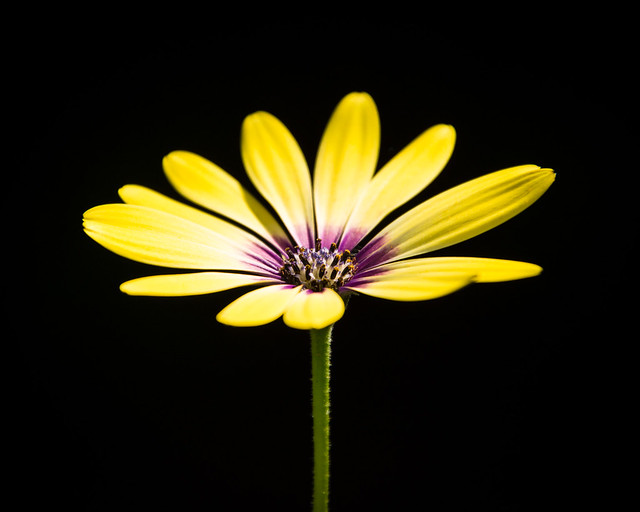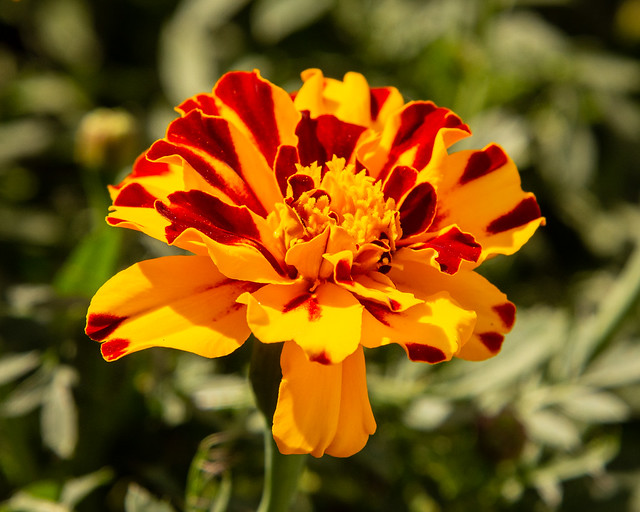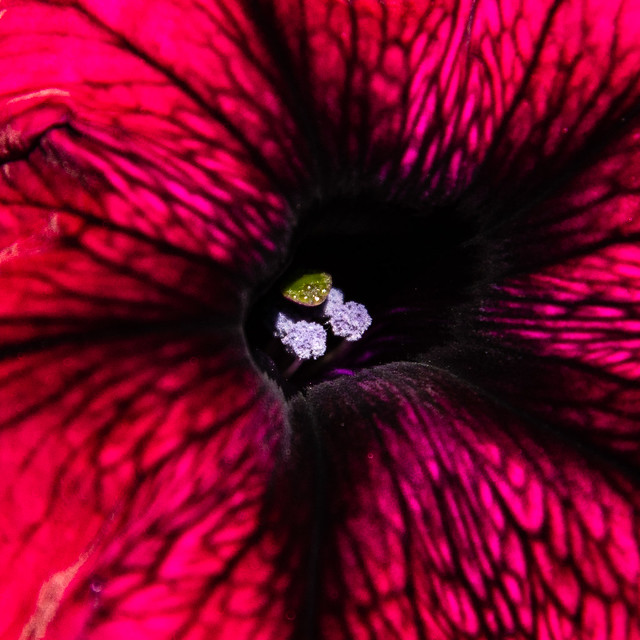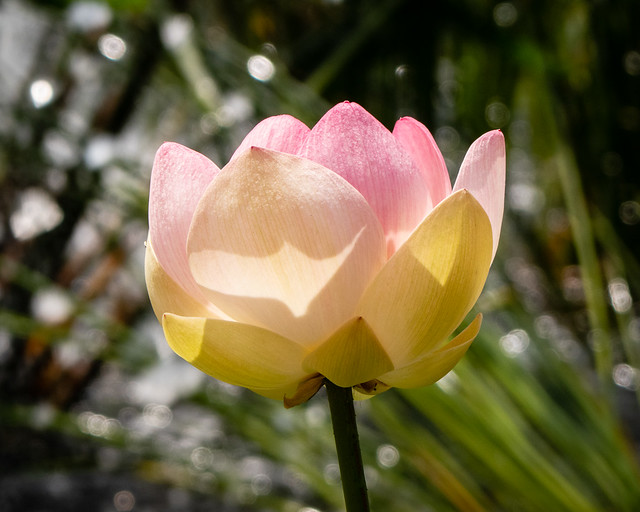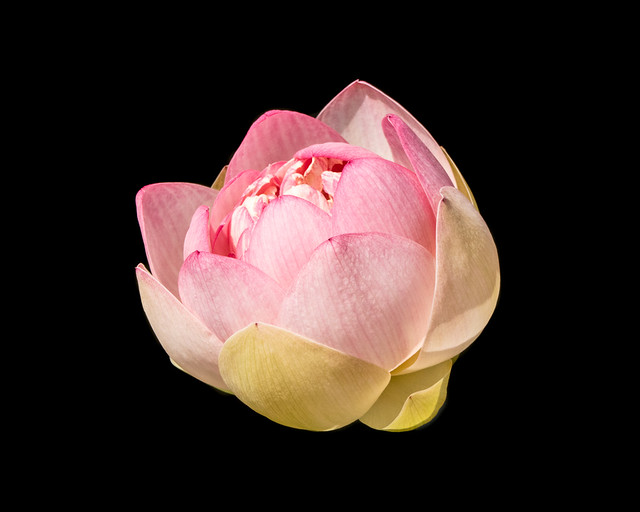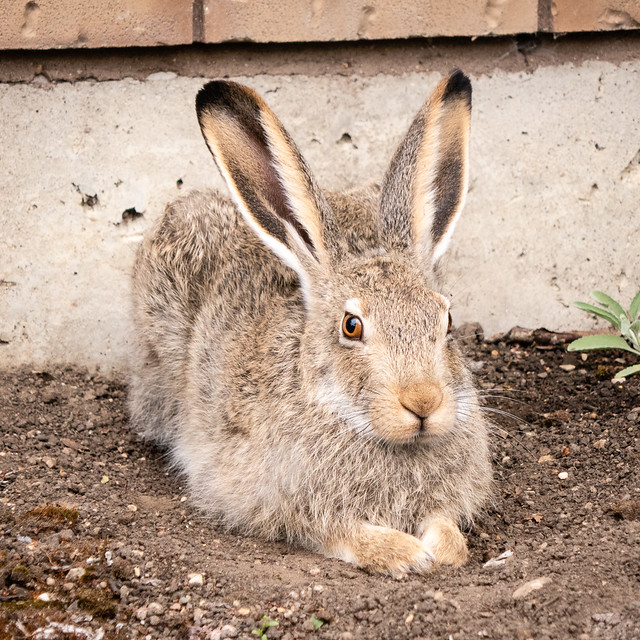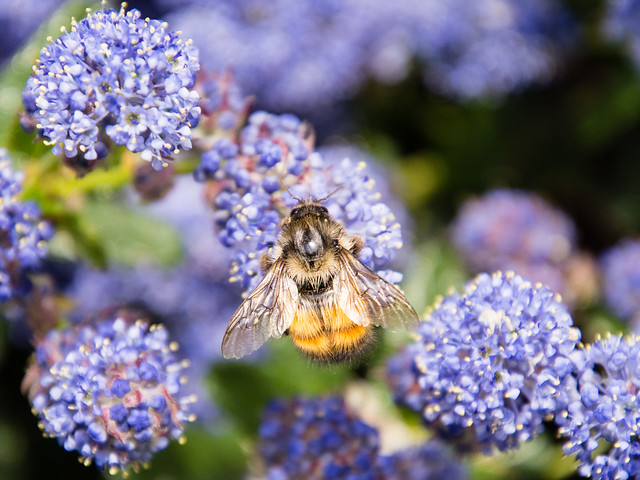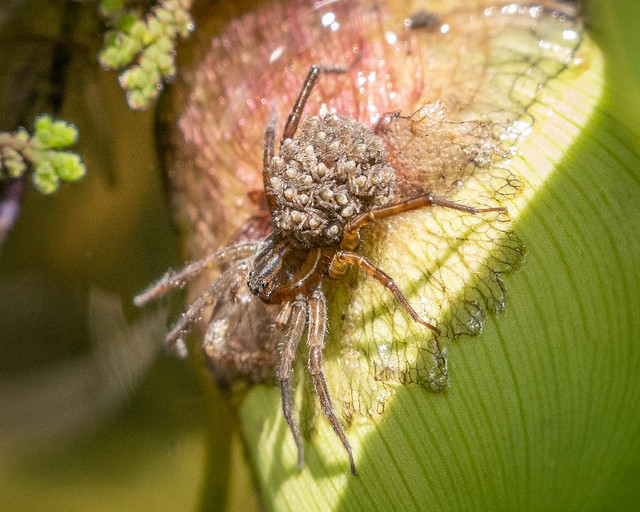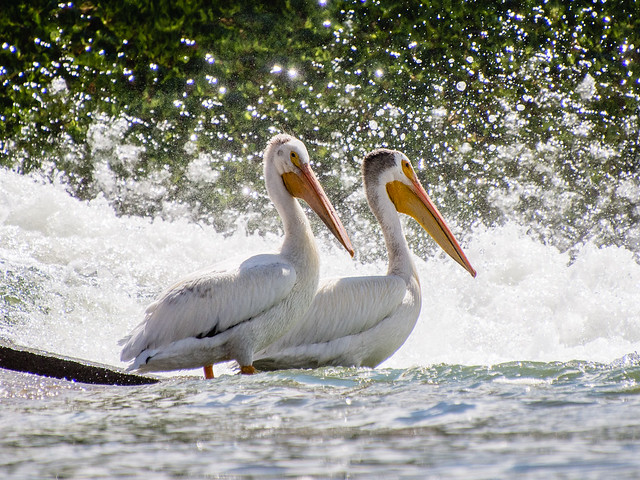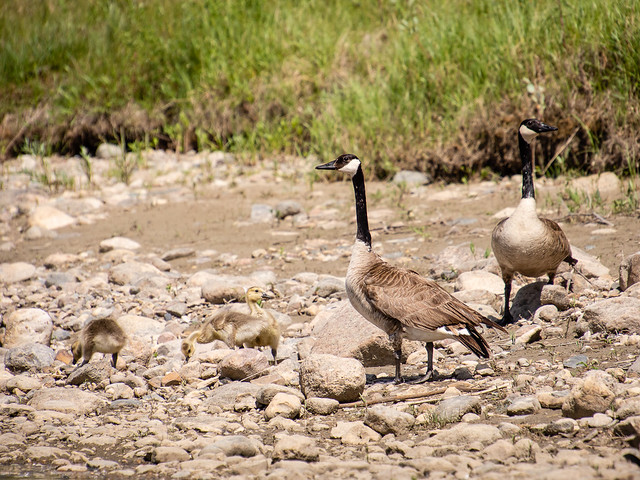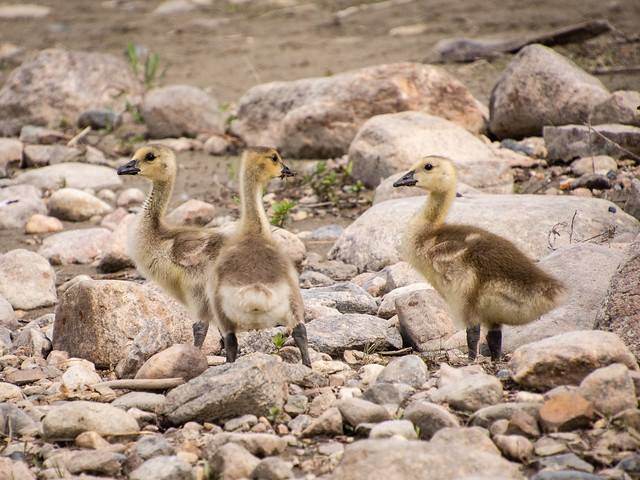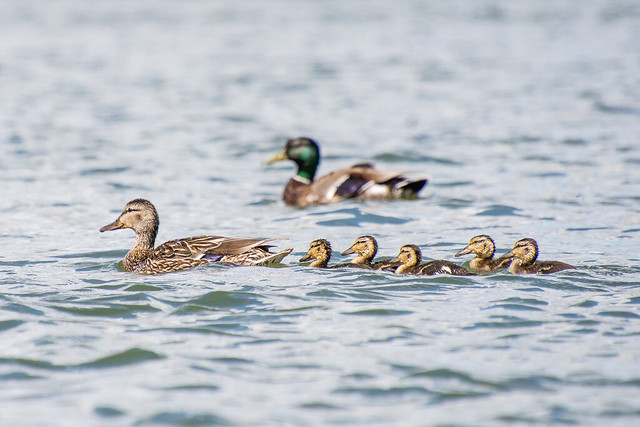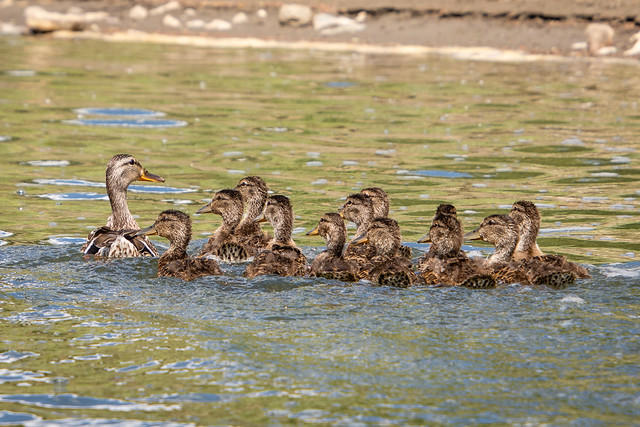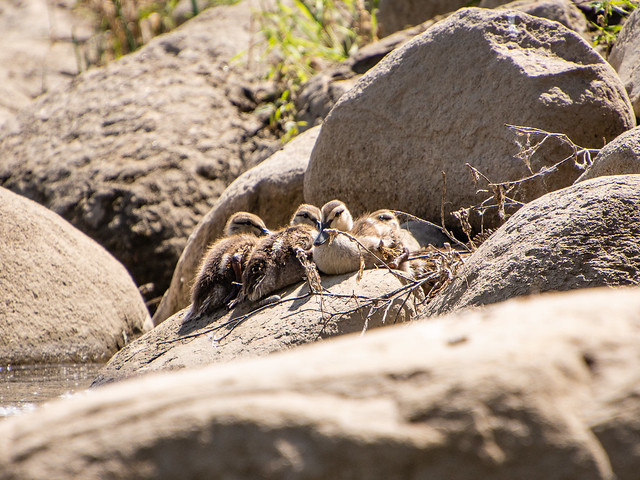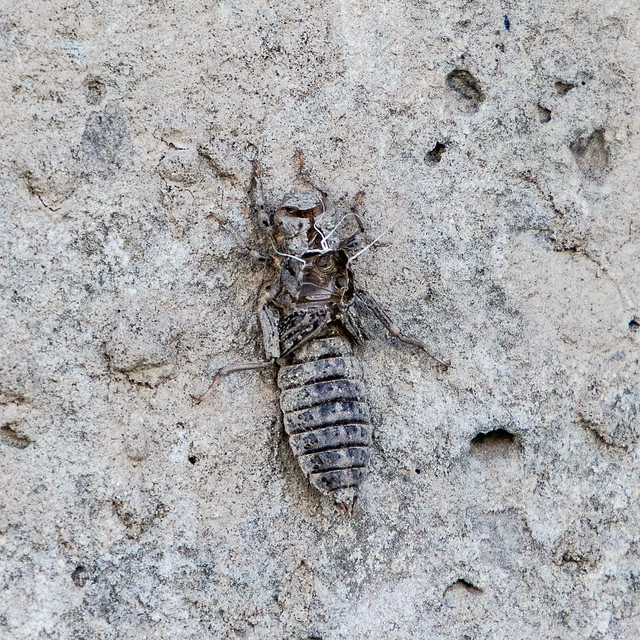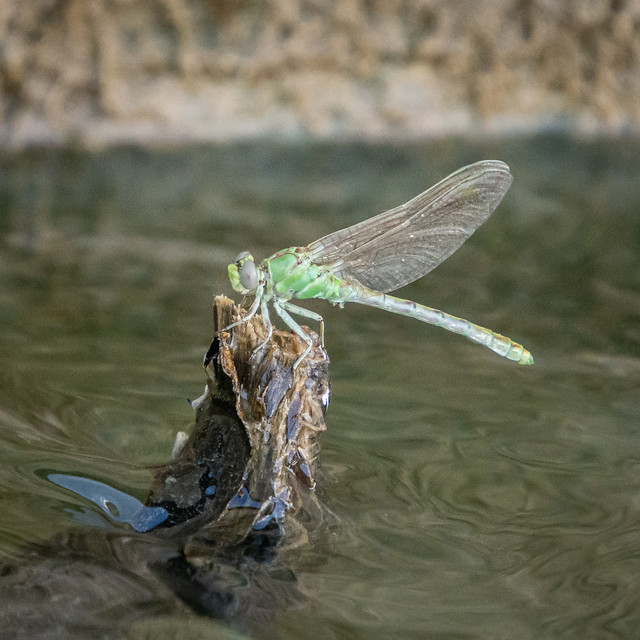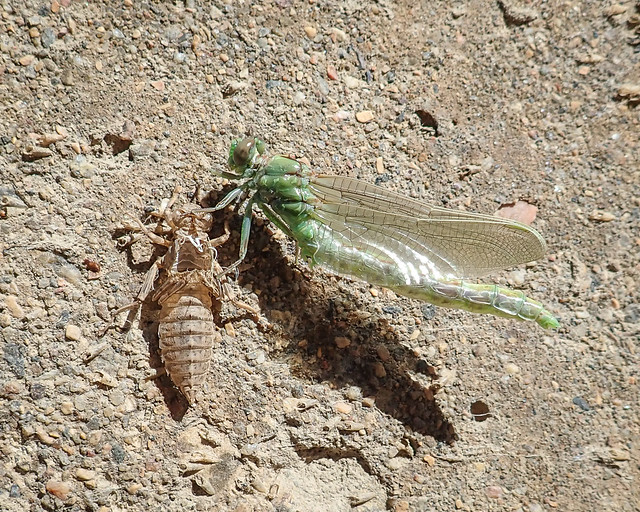
Pronghorn are fascinating animals. We saw lots of them on our recent road trip in Montana and Wyoming. They are most famous for being the fastest land mammal in the Western hemisphere, second only to African cheetahs. But they can sustain high speeds longer than cheetahs so you could say they're the fastest in the world. They've been observed to have at least 13 distinct gaits, including one reaching nearly 24 feet per stride! To help absorb the impact when running at high speeds, their hooves have two long, cushioned, pointed toes.
But despite their speed they can't jump well and have problems with fences, often going under or through fences instead of over. Land owners are encouraged to either remove or use a barbless bottom wire on fences.
They're often called "pronghorn antelope" but they actually aren't related to antelope. Their closest living relatives are giraffes and
okapi. Three other kinds of pronghorn existed in North America but went extinct around the time humans arrived. More recently, the current pronghorn almost went extinct as well. By the 1920's hunting had reduced the population to 13,000 and many thought they were on their way out. But conservation efforts, primarily the creation of refuges, helped them recover to an estimated population of 500,000 to 1,000,000. Until recently, pronghorn outnumbered humans in Wyoming and parts of Colorado :-)
They form mixed-sex herds in winter, but in summer they split up, the females and offspring forming groups, and the adult males living solitarily. We saw both female/offspring groups and solitary males.

Both males and females have "horns" but female's horns are much smaller. The "horns" are actually permanent blades of bone, covered in a keratinous (like your fingernails) sheath which is shed and regrown annually.
At one point in our trip we saw an animal crossing the road ahead of us. I thought it was maybe a coyote, but it was followed by a bunch of pronghorn and it turned out to be a pronghorn fawn. We stopped and watched the group. Although the group was headed in one direction, the fawn decided to go in the opposite direction.
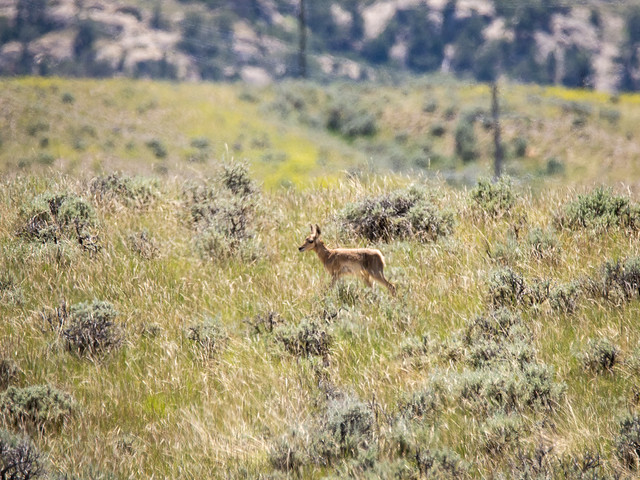
After a bit it lay down in the tall grass, making it very hard to see. Can you spot it? For the first month, young fawns spend much of their time hiding.
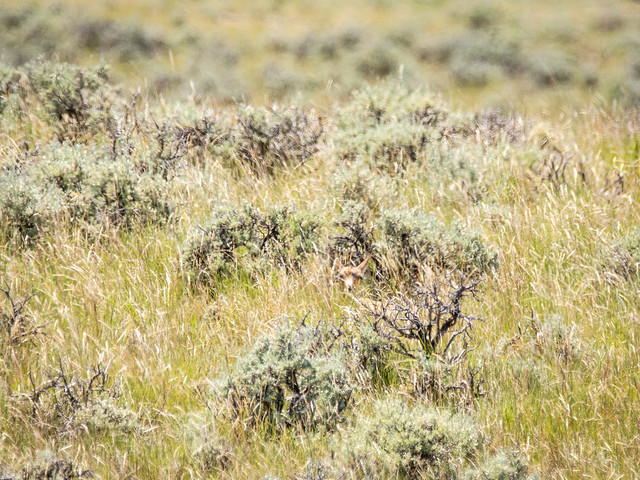
At first the adults didn't pay attention, but eventually one of them, presumably the mother, went back. The fawn made one last attempt to go in the opposite direction but the mother gave it a nudge with her nose and got it moving back to the group.
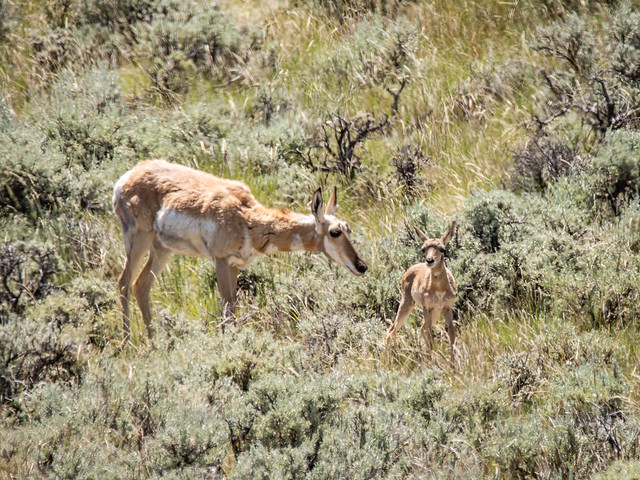
A bit later we saw another mother and fawn. Apparently they have a single fawn in their first litter, and then twins after that. We only saw single fawns.
 See more photos from this roadtrip
See more photos from this roadtrip
